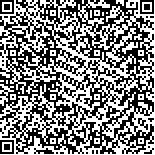| 摘要: |
| 选取具有显著产毒差异的利玛原甲藻(Prorocentrum lima) SHG株与2XS株为研究对象,以2-13C-甘氨酸为示踪原料结合高分辨质谱方法,为腹泻性贝类毒素及其酯化态毒素合成与代谢途径的研究提供新方法和思路。结果表明,两株藻共发现16种腹泻性贝毒及其酯化态毒素成分。对照培养条件下SHG株(大田软海绵酸毒素含量为7.88 pg/cell,鳍藻毒素1含量为4.35 pg/cell)的产毒能力高于2XS株(大田软海绵酸毒素5.70 pg/cell),而甘氨酸作为氮源培养条件可显著提高两株藻的产毒总量(P<0.05)。13C-甘氨酸标记组与甘氨酸培养组单细胞产毒量无显著变化(P>0.05)。腹泻性贝毒被标记后其同位素异构体丰度发生变化,其中酯化态受13C标记的影响程度更高,二级质谱图清晰表示出其碎片离子及脱水峰的标记情况。该方法直观阐明了甘氨酸可作为P.lima标记原料的产毒供体,并使用稳定同位素标记方法首次实现了酯化态的同步标记,有助于腹泻性贝毒生成机制的进一步研究。 |
| 关键词: 利玛原甲藻 腹泻性贝类毒素 酯化态 13C同位素示踪 四极杆/静电场轨道阱高分辨质谱 |
| DOI:10.11693/hyhz20220600169 |
| 分类号:S917 |
| 基金项目:中国水产科学研究院黄海水产研究所基本科研业务费资助,20603022022019号;中国水产科学研究院基本科研业务费资助,2020TD71号;科技基础资源调查专项,2018FY100200号。 |
附件 |
|
| APPLICATION OF 13C TRACING TECHNOLOGY IN THE SYNTHETIC PATHWAY OF DIARRHEAL SHELLFISH TOXIN IN PROROCENTRUM LIMA |
|
ZHANG Hao-Yu1, TAN Zhi-Jun2,3, ZHENG Guan-Chao2, LYU Song-Hui4, YANG Yue-Cong1, WU Hai-Yan2
|
|
1.Collage of Food Sciences & Technology, Shanghai Ocean University, Shanghai 201306, China;2.Key Laboratory of Testing and Evaluation for Aquatic Product Safety and Quality, Ministry of Agriculture and Rural Affairs, P. R. China, Yellow Sea Fisheries Research Institute, Chinese Academy of Fishery Sciences, Qingdao 266071, China;3.Pilot National Laboratory for Marine Science and Technology (Qingdao), Qingdao 266071, China;4.Research Center for Harmful Algae and Marine Biology, Jinan University, Guangzhou 510632, China
|
| Abstract: |
| The SHG and 2XS strains of Prorocentrum lima with significant differences in toxin production were selected as the research objects, and 2-13C-glycine was used as the tracer material combined with high resolution mass spectrometry for new method and idea to study the synthesis and metabolic pathway of diarrheal shellfish toxins and their esterified toxins. Sixteen types of diarrheal shellfish poison and their esterified toxin components were identified in the two strains of algae. Under the control culture condition, the toxin production ability of SHG strain (okadaic acid 7.88 pg/cell and dinophysistoxins 14.35 pg/cell) was greater than that of 2XS strain (okadaic acid 5.70 pg/cell), while glycine as nitrogen source could significantly increase the total toxin production of the two algae. There was no significant change in single cell toxin production between 13C-glycine labeled group and glycine culture group (P<0.05). The abundance of isotope isomers of diarrheal shellfish poisoning changed after being labeled, in which the esterification state was more affected by 13C labeling, and the secondary mass spectrometry clearly showed the labeling of fragment ions and dehydration peaks. This study shows that glycine can be used as the labeling material of P. lima, and thus the synchronous labeling of esterified state is realized for the first time by stable isotope labeling, which is helpful for the further study on the formation mechanism of diarrheal shellfish poisoning. |
| Key words: Prorocentrum lima diarrheal shellfish toxin esterified state 13C stable-isotope-tracer technique quadrupole electrostatic field orbital trap high resolution mass spectrometry |
